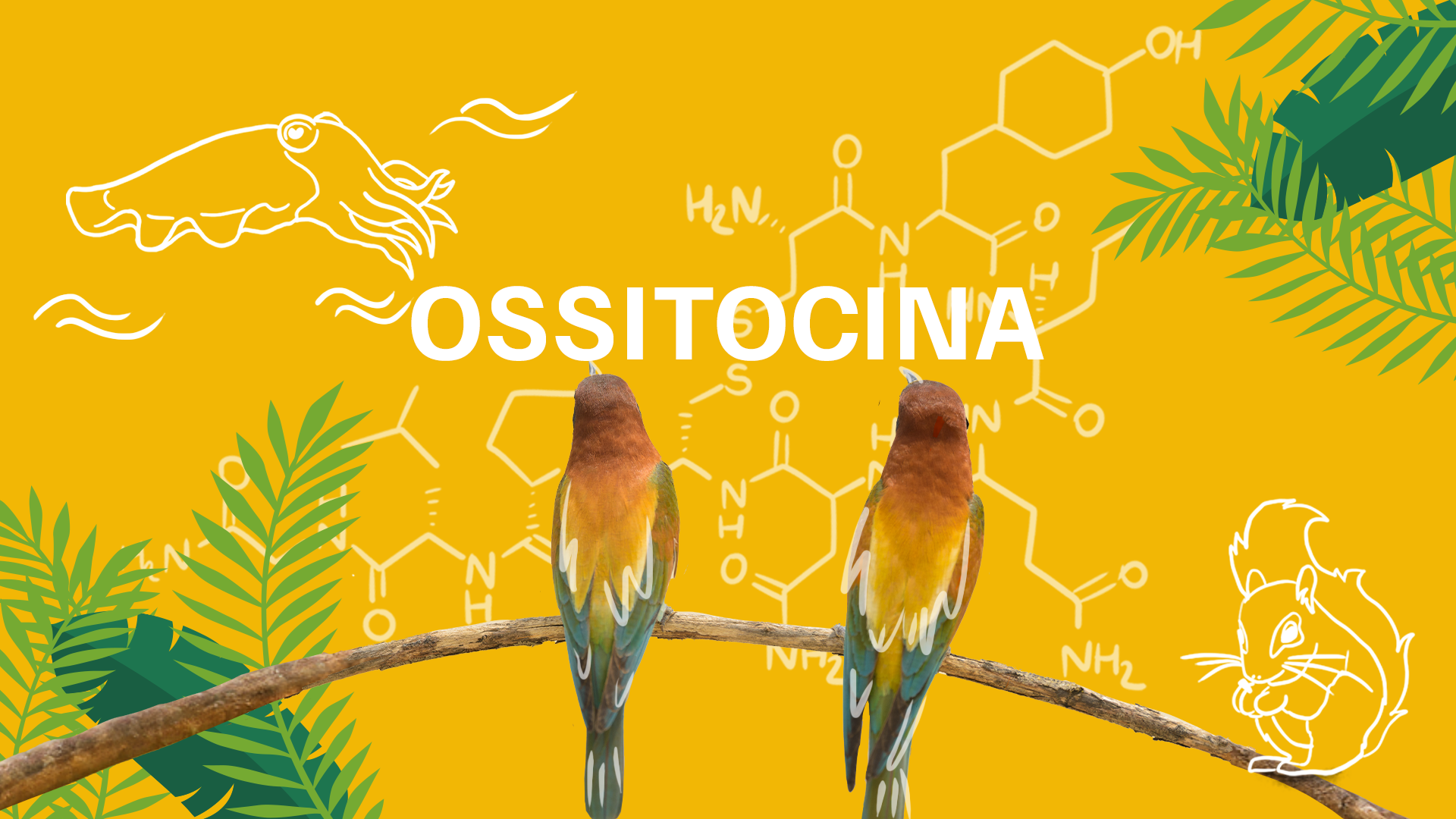
Its music and some of its effects
THE MUSICAL RESEARCH BY MATTIA VLAD MORLEO
In the transposition into music of the genetic code of Oxytocin, Morleo started from the stimulating aspect of the hormone, which acts in social interaction, especially family, telling through the increasing polyrhythms of the Prophet 6 synthesizer, the strengthening of the bonds that hormone provokes and through the homogeneous harmony of the whole piece the confidence that derives from it.
SCIENTIFIC STUDIES
To read the original texts from which the information reported here was derived, take a look at the literature at the end of the page.
In the human being (Homo sapiens)

Oxytocin (from the Greek ωκυξ and τοκοξ “rapid birth”) is a peptide hormone composed of nine amino acids (henceforth called nonapeptide) produced in the hypothalamus and secreted in the neurohypophysis. Its translation takes place through the transcription of the gene called Oxt, which is therefore the protagonist of our musical score.
Oxytocin is produced in the human body to control certain aspects of the reproductive system and social behavior: it inhibits the centers of fear in the brain, acts during childbirth and lactation, stimulates sexual desire, and feeds feelings of empathy and affection in both sexes. Oxytocin seems indeed to have a fundamental role in maintaining interpersonal and social ties, from the relationship between parents and children to those with friends and partners.
As a result, oxytocin is also known as the “love hormone”. However, since this definition is focused on the single human being only (and thus called anthropocentric), it would be more accurate to refer to it as “the hormone of sociality”.
At this link it is possible to view the mRNA sequence used for the Oxytocin music created for our project:
Effects on animals

IN DOG (Canis lupus familiaris)
In dogs, (Canis lupus familiaris Linnaeus, 1758) oxytocin is responsible for the attachment to the household: through looks, caresses and other interactions, it is possible to establish a real family bond between dogs and humans.
IN RODENTS (mice, rats, voles, squirrels)
Oxytocin in rodents (such as mice, rats, voles or squirrels) reduces anxiety and stimulates memory, especially social memory, due to the effect the hormone also has on the sense of smell: thanks to it, these animals can recognize their own fellows and distinguish harmful foods from those useful to their own survival.
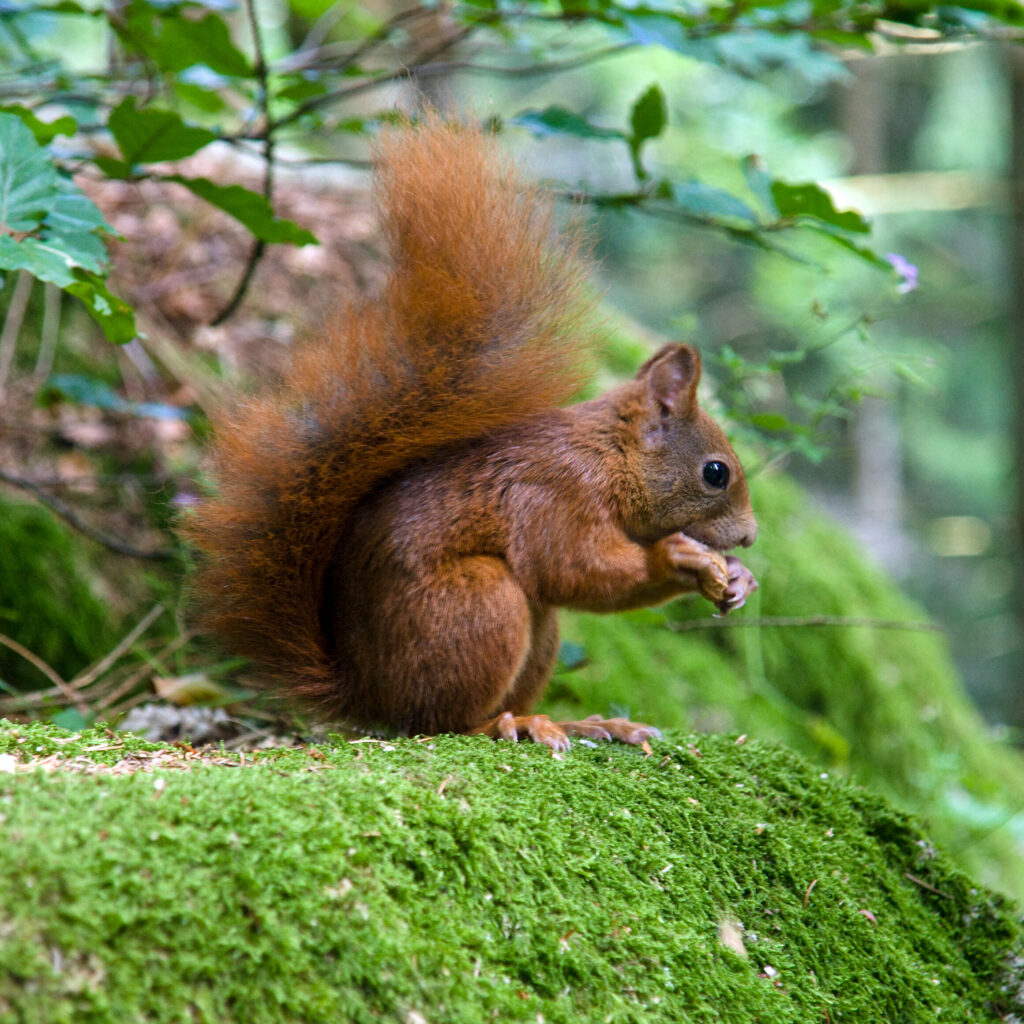
The Homologous Hormones
Proper oxytocin is only present in mammals, however structurally similar hormones (called homologues) belonging to the superfamily of oxytocin-vasopressin can be found in almost every living being, although with different and at times uncertain functions. Here are some of them.
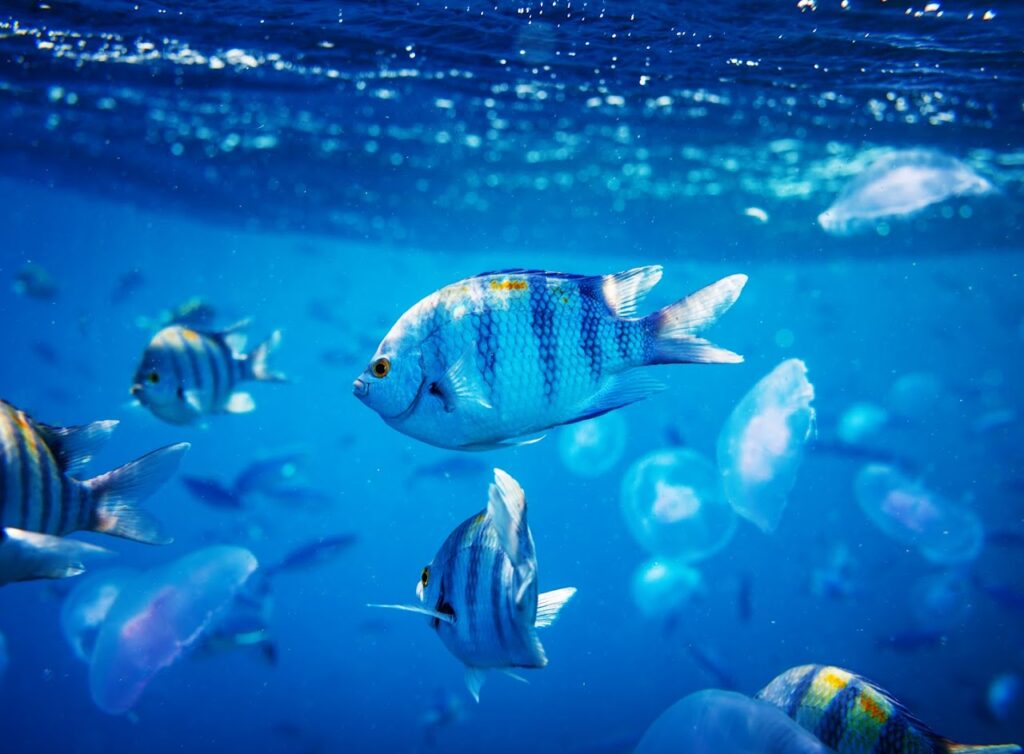
IN FISH
In bone fish (almost all fish except sharks, rays, sturgeons and chimeras) the homologous hormone to oxytocin is isotocin, which stimulates the processing of social information and strengthens links with fellow fish. However, it has also been related to aggressive social behaviors for territory protection.
In other vertebrates
Mesotocin is the homologue of oxytocin in pulmonary fishes, like dipnoi or latimerias, amphibians, reptilians, birds and some marsupials. In some birds (Taeniopygia guttata (Vieillot, 1817)), it may promote the preference for larger groups and for familiar individuals as partners.
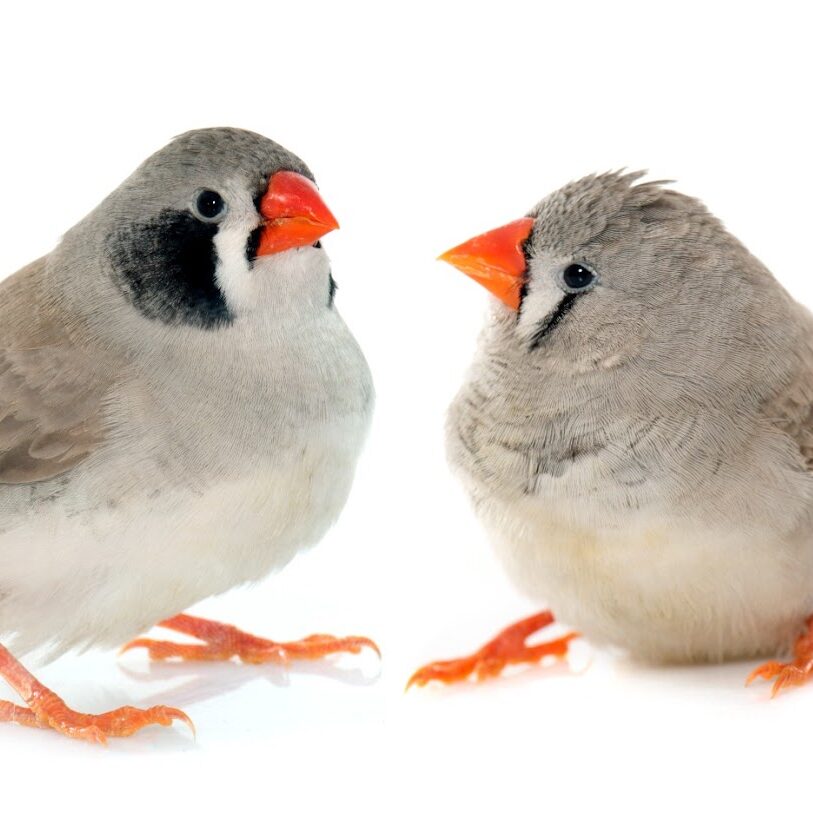
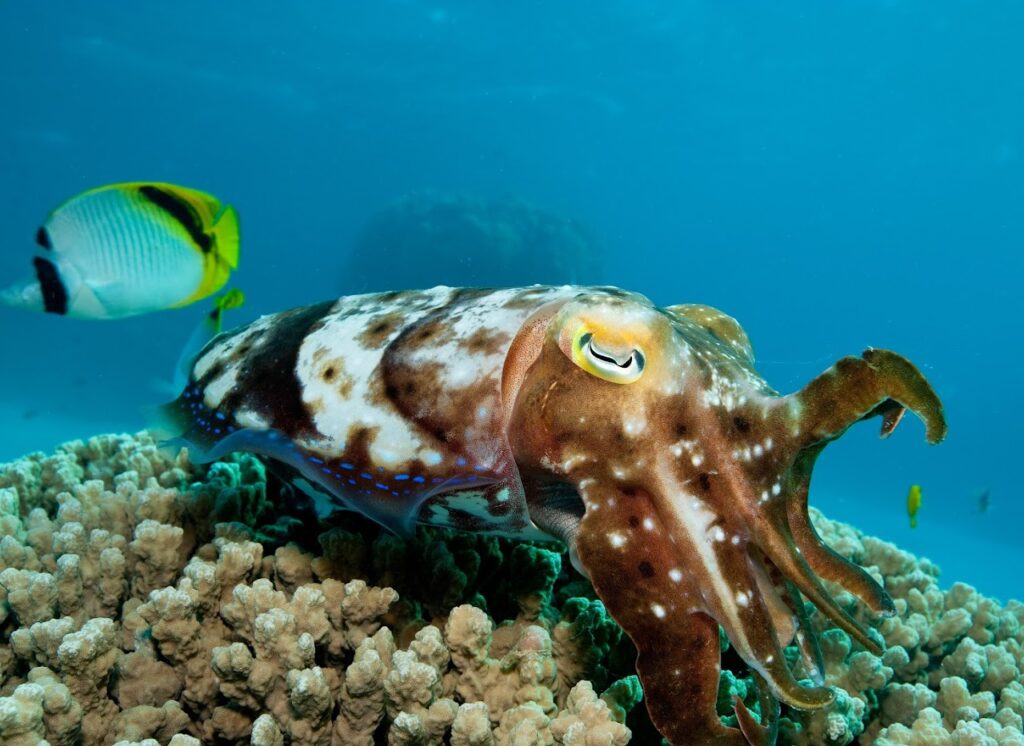
In cuttlefish
In cuttlefish (Sepia officinalis Linnaeus, 1758), cephalotocin, the oxytocin homologue, stimulates long-term memory, allowing it, for example, to recall the position of its den in an immense environment such as the sea or the ocean.
In earthworm
In the earthworm (Eisenia fetida (Savigny, 1826)) and a leech (Whitmania pigra (Whitman, 1884)), the oxytocin homologue, annetocin, is responsible for certain muscle movements, especially during the laying of eggs as, for example, contractions.

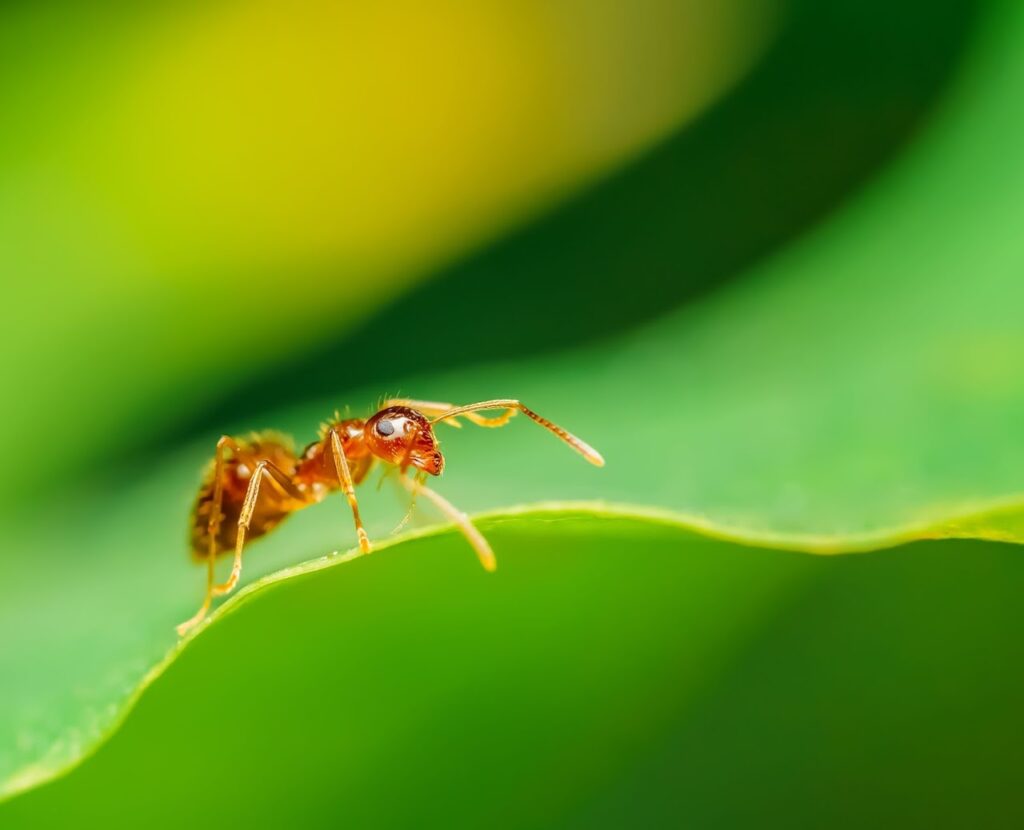
In INSECT
In insects, the homologue of oxytocin is inotocin. In some ants (Ooceraea biroi (Forel, 1907), a high level of inotocin is related to the tasks carried out outside the anthill, n increases the time spent outside, especially in older individuals. This seems to show its contribution to behaviors related to individuality and to the division of labor in the ant society.
Literature
On the effects of oxytocin on the human being:
*Di Nuovo S. e Zagara A. 2016. L’ossitocina: un regolatore per tutte le emozioni? Annali della facoltà di Scienze della formazione. Università degli studi di Catania.15 (2016), pp. 3-17. doi: 10.4420/unict-asdf.15.2016.1
*Bartz JA, Zaki J, Bolger N, Ochsner KN. Social effects of oxytocin in humans: context and person matter. Trends Cogn Sci. 2011 Jul;15(7):301-9. doi: 10.1016/j.tics.2011.05.002.
*Quintana D and Alvares G (2016). Oxytocin: How Does This Neuropeptide Change Our Social Behavior? Front. Young Minds. 4:7. doi: 10.3389/frym.2016.00007
Dog – human being:
*Nagasawa, M., Mitsui, S., En, S., Ohtani, N., Ohta, M., Sakuma, Y., et al. (2015). Oxytocin-gaze positive loop and the coevolution of human-dog bonds. Science 348, 333–336. doi: 10.1126/science.1261022
*Petersson M, Uvnäs-Moberg K, Nilsson A, Gustafson LL, Hydbring-Sandberg E, Handlin L. Oxytocin and Cortisol Levels in Dog Owners and Their Dogs Are Associated with Behavioral Patterns: An Exploratory Study. Front Psychol. 2017;8:1796. Published 2017 Oct 13. doi:10.3389/fpsyg.2017.01796
Other mammals:
*Churchland PS,Winkielman P. 2012. Modulating social behavior with oxytocin: how does it work? What does it mean? Horm. Behav. 61, 392–399.doi:10.1016/j.yhbeh.2011.12.003)
Rodents:
*Lee HJ, Macbeth AH, Pagani JH, Young WS 3rd. Oxytocin: the great facilitator of life. Prog Neurobiol. 2009;88(2):127-151. doi:10.1016/j.pneurobio.2009.04.001
Birds:
*Goodson, J.L., Schrock, S.E., Klatt, J.D., Kabelik, D., Kingsbury, M.A., 2009. Mesotocin and nonapeptide receptors promote estrildid flocking behavior. Science 325, 862–866. doi:. 10.1126/science.1174929
Fish:
*Ataei Mehr, B., Garner, S.R. & Neff, B.D. Effect of isotocin on shoaling behaviour of the Guppy (Poecilia reticulata). Anim Cogn 23, 827–831 (2020). https://doi.org/10.1007/s10071-020-01381-4
*Sokołowska, E., Gozdowska, M. & Kulczykowska, E. Social context affects aggression and brain vasotocin and isotocin level in the round goby. Fish Physiol Biochem 46, 641–652 (2020). https://doi.org/10.1007/s10695-019-00741-3
*Reddon AR, O’Connor CM, Marsh-Rollo SE, Balshine S. 2012. Effects of isotocin on social responses in a cooperatively breeding fish. Anim. Behav. 84, 753–760. https://doi.org/10.1016/j.anbehav.2012.07.021
Cuttlefish:
*Bardou I, Leprince J, Chichery R, Vaudry H & Agin V (2010). Vasopressin/oxytocin-related peptides influence long-term memory of a passive avoidance task in the cuttlefish, Sepia officinalis. Neurobiol Learn Mem 93, 240–247. https://doi.org/10.1016/j.nlm.2009.10.004
Octopus:
*Kanda A, Satake H, Kawada T, Minakata H. Novel evolutionary lineages of the invertebrate oxytocin/vasopressin superfamily peptides and their receptors in the common octopus (Octopus vulgaris). Biochem J. 2005 Apr 1;387(Pt 1):85-91. doi: 10.1042/BJ20041230
Annelids (polychetic earthworms and leeches):
*Ukena K, Oumi T, Matsushima O, Ikeda T, Fujita T, Minakata H & Nomoto K (1995). Effects of annetocin, an oxytocin-related peptide isolated from the earthworm Eisenia foetida, and some putative neurotransmitters on gut motility of the earthworm. J Exp Zool 272, 184–193. https://doi.org/10.1002/jez.1402720303
*Fujino Y, Nagahama T, Oumi T, Ukena K, Morishita F, Furukawa Y, Matsushima O, Ando M, Takahama H, Satake H, Minakata H & Nomoto K (1999). Possible functions of oxytocin/vasopressin-superfamily peptides in annelids with special reference to reproduction and osmoregulation. J Exp Zool 284, 401–406. https://doi.org/10.1002/(SICI)1097-010X(19990901)284:4<401::AID-JEZ6>3.0.CO;2-U
Ants:
* Fetter-Pruneda I, Hart T, Ulrich Y, Gal A, Oxley PR, Olivos-Cisneros L, Ebert MS, Kazmi MA, Garrison JL, Bargmann CI, Kronauer DJC. An oxytocin/vasopressin-related neuropeptide modulates social foraging behavior in the clonal raider ant. PLoS Biol. 2021 Jun 30;19(6):e3001305. doi: 10.1371/journal.pbio.3001305.
Evolution of oxytocin-vasopressin in insects:
*Liutkeviciute, Z., Koehbach, J., Eder, T. et al. Global map of oxytocin/vasopressin-like neuropeptide signalling in insects. Sci Rep 6, 39177 (2016). https://doi.org/10.1038/srep39177
